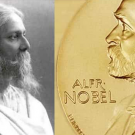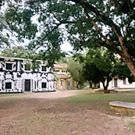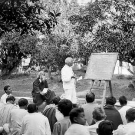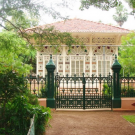
Travelling the World for Visva-Bharati
Rabindranath travelled almost incessantly. He went several times to England, to Continental Europe, to the United States of America, to Japan, to Ceylon, to Egypt, to China, to Burma, to Argentina, to Russia, and to the countries of South East Asia. Explaining his migratory instinct he wrote to his younger daughter Mira: Read more



